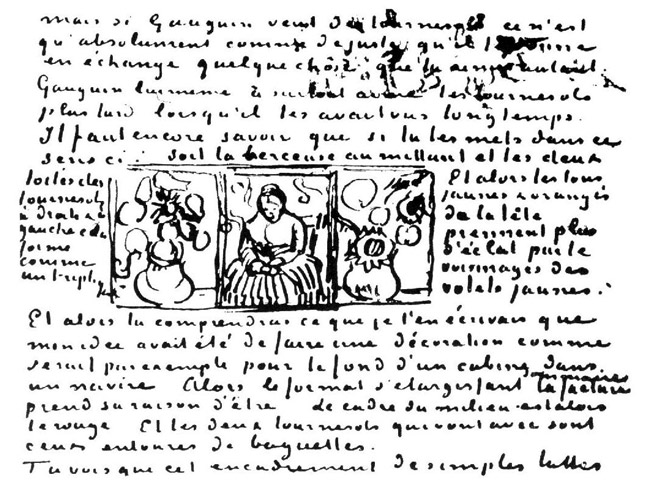Paul Cézanne in 10 Paintings
Paul Cézanne (1839–1906) was one of the most influential and greatest of the Post-Impressionist painters. Here is a list of ten different...
Sam Malone 17 February 2025
Vincent van Gogh’s Sunflowers are probably among the most famous paintings of all time. The artist loved these yellow flowers and painted them numerous times throughout his life. He eventually became associated with them, and even after he passed away his friends brought sunflowers to his funeral. Read some interesting facts about Van Gogh’s sunflower paintings.

Vincent van Gogh, Withered Sunflowers, 1887, Kröller-Müller Museum, Otterlo, Netherlands.
The famous Sunflowers is actually the second series of sunflower paintings by the artist. There is an earlier series of four works, made during his years in Paris, that depict flowers lying on the ground. Paul Gaugin saw Van Gogh’s Parisian sunflowers and greatly admired them. He subsequently acquired two of the paintings and hung them above his bed in his apartment.

Vincent van Gogh, Sunflowers, 1889, Van Gogh Museum, Amsterdam, Netherlands.
The famous series with sunflowers in a vase were initially painted as decoration for Paul Gaugin’s room in Arles. Van Gogh looked up to Gauguin and decided to paint the series when Theo, his brother, finally persuaded Gauguin to join him in Arles. He did seven paintings in total, three of which are kept in different museums all over the world (the Neue Pinakothek in Munich, the National Gallery in London, and the Van Gogh Museum in Amsterdam). Of the others, one belongs to a private collection and another was lost during World War II. There are also versions in the Philadelphia Museum of Art and the Sompo Japan Museum of Art in Tokyo.

Paul Gauguin, Vincent van Gogh Painting Sunflowers, 1888, Van Gogh Museum, Amsterdam, Netherlands.
In Arles, Gauguin made a portrait of Van Gogh painting one of these iconic still lifes. Through his many self-portraits we are very familiar with Van Gogh’s likeness. However Gauguin’s painting gives us a glimpse of how he saw the famous painter. Van Gogh once wrote about Gauguin’s portrait:
My face has lit up a lot since, but it was indeed me, extremely tired and charged with electricity as I was then.

Vincent van Gogh, Sunflowers, 1888, The National Gallery, London, UK.
Still-lifes with flowers were a pretty common subject for painters at the time. At first, Van Gogh followed a more traditional approach in his still lifes but progressively moved to more extreme color contrasts. Sunflowers is an example of such an experiment, a study of varying hues of yellow and green.

Vincent van Gogh, Woman Rocking the Cradle (La Berceuse), 1889, The Metropolitan Museum of Art, New York, NY, USA.
The Sunflower paintings were meant to symbolize happiness. The yellow flowers were a metaphor for loyalty and devotion in Dutch literature. Moreover, Van Gogh considered them symbols of gratitude.

Letter excerpt by Vincent van Gogh to his brother Theo dated 22 May 1889. Paint Watercolor Create.
He also intended to create a triptych in which his portrait of Woman Rocking the Cradle would be framed by two sunflower paintings. He described this idea in a letter to his brother Theo, along with a sketch:
I picture to myself these same canvases between those of the sunflowers, which would thus form torches or candelabra beside them, the same size, and so the whole would be composed of seven or nine canvases.
Van Gogh took the humble yellow flowers and turned them into iconic works of art. It is no wonder that when Gaugin saw the paintings in Arles he immediately called them “completely Vincent’’. The Dutch artist will be forever associated with them as a symbol of joy and gratitude for a world he could not understand.
DailyArt Magazine needs your support. Every contribution, however big or small, is very valuable for our future. Thanks to it, we will be able to sustain and grow the Magazine. Thank you for your help!